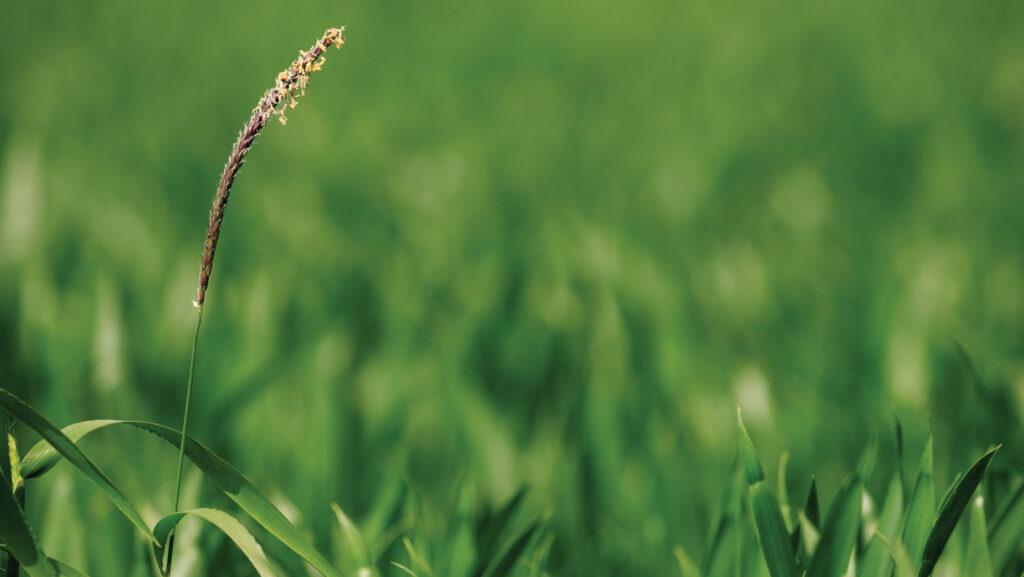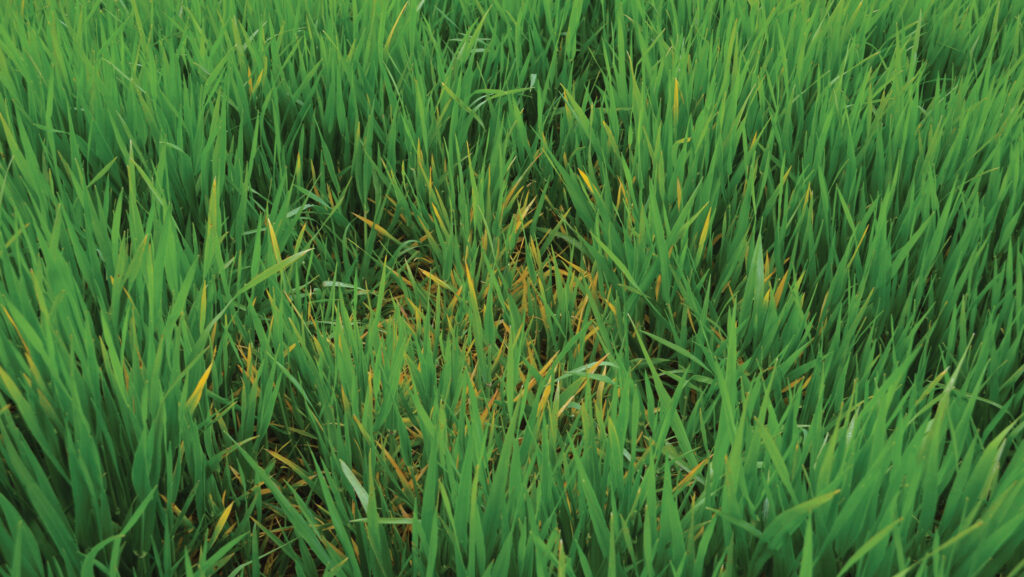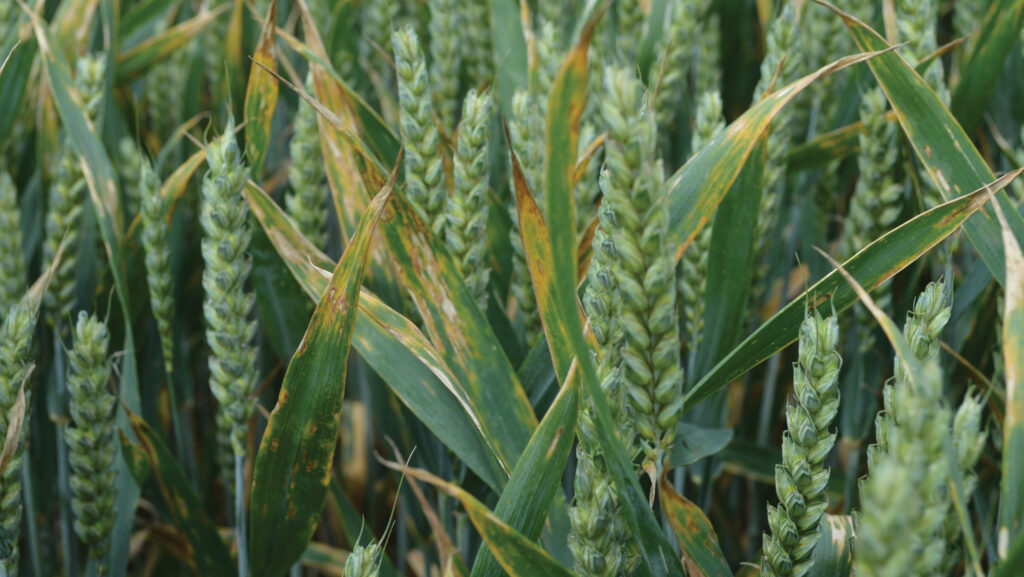3 risks to assess before drilling winter wheat early
 © Tim Scrivener
© Tim Scrivener Winter wheat growers are being advised to think hard about three heightened risks before going for early drilling this autumn – namely blackgrass, aphid-borne disease, and septoria.
After a very wet autumn last year disrupted drilling, many wheat growers will look to drill early to make sure they get a crop in the ground, but that means the risks from grassweeds, virus-carrying aphids and foliar disease will be magnified.
See also: How to maximise SFI herbal leys in arable rotations
The UK winter wheat area for harvest 2024 is forecast to have fallen 15% to 1.46m hectares – the smallest area since 2020 – according to the AHDB Early Bird survey.
However, many see it bouncing back strongly with increased drillings this autumn as growers focus on simply getting a crop in the ground.
However, delayed drilling will give more time to control blackgrass, avoid the main migration period for the aphids which spread barley yellow dwarf virus (BYDV), and prevent septoria resistance ratings of wheat varieties slipping.
1. Blackgrass
John Cussans, blackgrass expert at crop consultant Niab, says it will be difficult decision to make for growers but delayed drilling will help cut the blackgrass burden.
Blackgrass has been worse this season after many herbicide sprays were missed due to wet weather and poorly established wheat crops struggled to compete with the weed.
“Every week growers hold off will give better herbicide control, and so growers will get better control from the same spend,” he tells Farmers Weekly.
John adds that by delaying drilling, residual pre-emergence herbicides will work better as soils will be more moist, the weather will be cooler and there will be less sunlight – all conditions which make these herbicides more effective.
He advises growers to try to hold off until the second half of September and preferably October to get the best control, while for those early drillers he says that blackgrass control should have been achieved earlier in the crop rotation.
“If you are thinking about early September drilling then the blackgrass population should have been controlled earlier in the rotation,” he adds.
Blackgrass problems have been particularly acute on many farms after two successive wet autumns with vital sprays missed, hence the increased need for delayed drilling and the use of stale seed-beds to control this grassweed.
To get the best agrochemical weed control, he suggests pre-emergence herbicide sprays be applied as close as possible to drilling, and preferably within two days.
He suggests two residual pre-emergence approaches – either a diflufenican + flufenacet + aclonifen + prosulfocarb mix, or a cinmethylin (Luxinum Plus) + pendimethalin mix.
If the blackgrass burden is very high, growers need to decide whether to spray off the crop before harvest or harvest the crop and then think about spring cropping to get on top of the grassweed, he adds.

© David Jones
2. Aphids
Early drilling will also heighten the risk of aphids arriving in crops to infect them with BYDV, and Mark Ramsden, lead entomologist at fellow crop consultant Adas, says a holistic approach is needed.
“Delayed drilling will reduce the severity of BYDV, but could affect yields and the ability to get a crop in the ground,” he says.
Mark points out that ploughing will damage beneficial insects that feed on aphids, such as beetles, which may take time to recover, while grass margins and more diverse cropping with wild flowers will help beneficials thrive.
Choice of variety is also an option for growers needing to drill early, and there are BYDV-resistant varieties available such as Wolverine which is on the current AHDB Recommended List (RL) and also Grouse, which is not, while Goldfinch is coming up for possible entry to the list later this year.
These three also have orange wheat blossom midge resistance as well as BYDV, while Goldfinch is the only variety with good adult and juvenile resistance to brown rust, a foliar disease which has been seen widely this season.
These three have yields a little below leading varieties. For example Group 2 variety Goldfinch has a fungicide-treated yield of 88% compared with fellow Group 2 Extase on 101%, while Group 4 Wolverine on 99% is behind the top yielding feed wheats on 106%.
However, these three wheat varieties with this twin resistance package could qualify for the £45/ha a year on offer for non-insecticide use under the Sustainable Farming Incentive.
BYDV disease can cut yields by up to 50% in severe years, especially in mild autumns leading to big numbers of bird cherry-oat and grain aphids, which spread the disease.
It can infect both barley and wheat, and pyrethroid insecticides are the main method of agrochemical control.
For winter barleys, there is one variety with tolerance in the RL, the six-row conventional variety Feeris, but there are five candidate varieties with this trait.
They come up for possible recommendation later this year and include the two-row varieties Organa and Carpenter, six-rows Integral and Sixy, and one which is resistant, Kestrel.
For those varieties without resistance or tolerance, an Adas T-sum system for assessing risk can be used to help decide on insecticide spraying.
The T-sum calculation is the cumulative average daily temperatures from the date of crop emergence to give an indication of when to spray.
But growers are always advised to check in the field as the T-sum threshold was reached at Morley in Norfolk last autumn, but no aphids were present, perhaps due to the very wet weather meaning no insecticide was used.

© David Jones
3. Septoria
Early drilling can also exacerbate septoria disease pressure, and can reduce the effective genetic resistance scores of individual wheat varieties.
Aoife O’Driscoll, crop protection specialist at consultant Niab, warns that septoria resistance scores will fall with early drilling, putting crops at risk from the crop’s most damaging disease.
AHDB work shows that moving to early drilling on 22 September from a standard sowing date of 7 October can decrease the septoria resistance rating by about 0.6, whereas late sowing on 20 October can increase it by 0.6.
So the popular variety Champion would drop from 7.9 if drilled earlier than October 7, and this could be more serious for a lower scoring variety like Skyscraper on just 4.9, in a 1-9 scoring regime where 9 shows good resistance and 1 is very susceptible.
However, delayed drilling to reduce the risk of septoria can encourage yellow and brown rusts which tend to favour later timings. Drilling date can be a comprise between controlling septoria and the rust diseases.
All those speaking to Farmers Weekly were attending a Morley Innovation Day in June at the Morley Agriculture Foundation, a charity which operates Morley Farms, near Wymondham, Norfolk, half way between Thetford and Norwich.
The farm consists of 700ha of arable cropping on light sandy loam soil growing winter wheat, winter barley, spring barley, sugar beet and maize. The farm is also the AHDB’s strategic cereal farm East.

